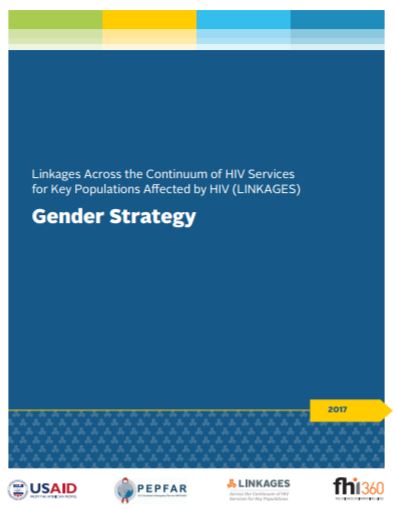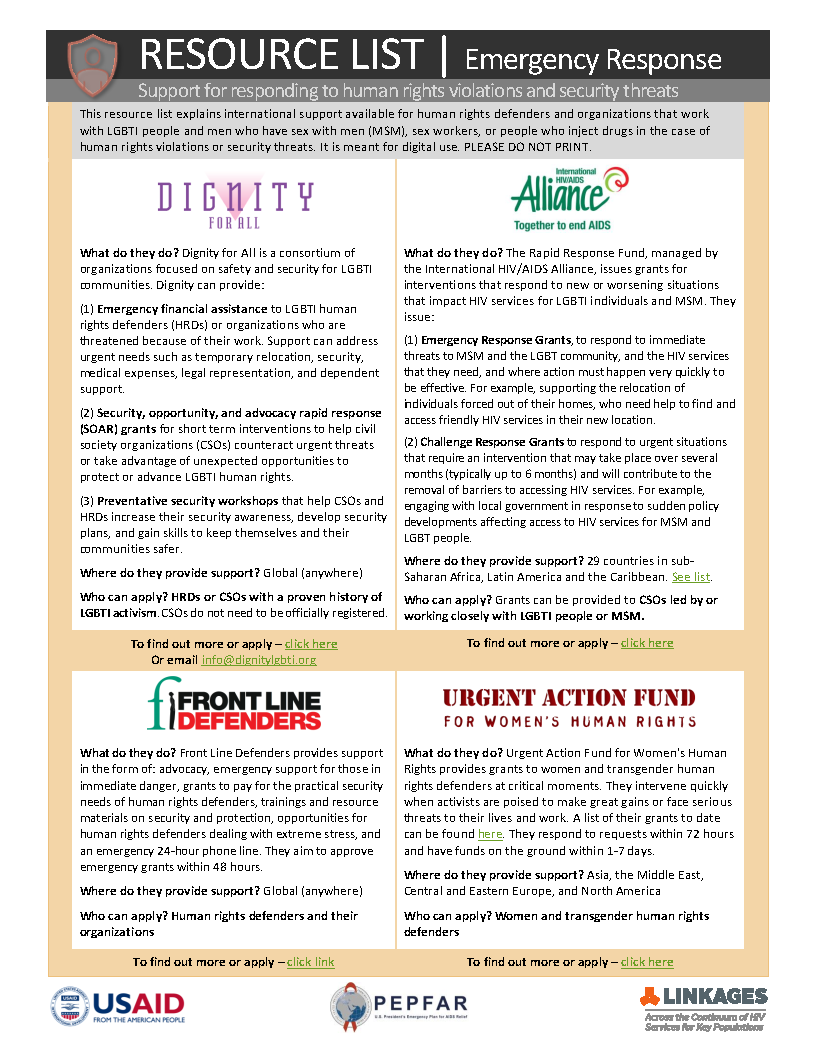Written by Giuliana Morales, Senior Technical Officer, Research Utilization, FHI 360, and Aubrey Weber, Technical Officer, Research Utilization, FHI 360

LINKAGES, CHAMP, and CBOs participate in a small group discussion on strategies to improve the implementation of the minimum package of gender-based violence services for key populations in Bamenda, Douala, and Yaoundé, Cameroon. Photograph by Christian Tanyi.
Key populations (KPs) – including men who have sex with men (MSM), people who inject drugs (PWID), sex workers, and transgender (trans) people – often suffer from rigid and harmful gender norms. They underlie much of the stigma, discrimination, and violence faced by KP groups worldwide, inhibiting their ability to access HIV prevention, care, and treatment services. For example, in Kenya, women who inject drugs often face more stigma, discrimination, and violence than their male counterparts but may be left out of PWID programming altogether due to the gendered expectation that PWID are male.
While KP programming has rarely employed gender integration on a systematic level, gender integration has been shown to improve and sustain HIV outcomes. To address this missed opportunity, the USAID– and PEPFAR-funded LINKAGES project developed a Gender Strategy that describes the benefits of gender integration and provides specific actions and tools to integrate gender in HIV programming for KPs. Based on the mandate of the LINKAGES project and in accordance with PEPFAR guidance, LINKAGES focuses its gender integration efforts in three areas:
Designing and implementing activities that reach all members of KPs and challenge harmful gender norms at the root of stigma, discrimination, and violence against KPs
A gender analysis is the first step in the process of gender integration. As gender analyses have not been traditionally conducted with KPs, LINKAGES developed a Gender Analysis Toolkit, using learning from analyses conducted in Cameroon and Kenya. As the briefs from both countries show, a gender analysis can help programs answer important questions such as: Are all members of KPs being considered in your programming? What harmful gender-related beliefs may contribute to HIV risk, a lack of service uptake, stigma, discrimination, or violence against KPs? How do harms caused by gender norms link KPs and the issues they face to those of the broader population, and are there opportunities for combined efforts? The answers help in the design and implementation of gender accommodating and transformative HIV programming (the programming types most likely to result in lasting change).
Promoting the inclusion of trans people in KP programming
Trans women are 49 times more likely to be living with HIV than the general population, yet they have historically been ignored in HIV programming. Many of the reasons for this exclusion are gender-related; therefore, LINKAGES’ gender strategy emphasizes the need for increased understanding of and improved HIV programming for trans people. To support advocacy efforts for more trans-competent programming, LINKAGES developed Rights in Action: Transgender Health and HIV, a brief that includes information on the importance of working with trans people, the way that transphobia ultimately leads to HIV acquisition, and the many opportunities for intervention that address both current health needs and the underlying causes of the epidemic.
Preventing and responding to gender-based violence and other forms of violence against KPs
Violence against KPs is widespread and can often be traced back to rigid beliefs about acceptable gender expression and sexual behavior for men and women. Global evidence shows that violence is both a cause and consequence of HIV: violence can increase HIV risk, decrease testing uptake and disclosure, and decrease adherence to antiretroviral treatment among KPs while living with HIV can increase KPs’ vulnerability to violence. To achieve lasting results in the fight against HIV, LINKAGES developed and is rolling out practical guidelines for integrating violence prevention and response into HIV programs. The LINKAGES Gender Strategy also provides information on international resources that can be accessed when violence occurs or safety threats intensify.
Addressing the HIV epidemic against KPs is necessary to achieving 90-90-90 goals, and incorporating a gender lens into KP programs will increase the impact of investments made in this vital programming area.
